Dragoons with "tails" and dragoons with hats
All flashed before us,
All have visited here.
M. Lermontov. Borodino
Military affairs at the turn of the eras. In our two previous articles, dedicated to cuirassiers and their opponents, we found out that those in the first place were the dragoons, who also belonged to the heavy (somewhere in the "medium cavalry") cavalry, that is, they were the same cuirassiers, but only without cuirass. By the way, they really looked alike in uniform, especially during the era of the Napoleonic Wars. And many did have ponytails on their helmets, although not always and not all. And today we will talk about all these dragoons, both tailed and tailless, in the next article of our cuirassier cycle.
Dragoons often rescued newly created armies, since for their time they were a truly universal type of cavalry. They became the first numerically "continental" horsemen of 13 rebel colonies when they opposed Great Britain during the Revolutionary War. And it so happened that, taking advantage of the superiority of its settlers and the strength of its colonies in America, Great Britain drove France and Holland from the continent. But the 13 colonies, becoming economically more and more powerful and economically independent, demanded greater independence for themselves, because they were very much unhappy with the fact that they were simple sources of raw materials and a market for finished products for mother metropolis. In early 1775, open clashes broke out between the colonists and the British regular army, signaling the start of the American War of Independence. Towards the end of 1776, when military operations were already in full swing, George Washington wrote to Congress: “Based on the experience I have gained in this campaign regarding the usefulness of horses, I am convinced that war is impossible without them, and I would therefore like to recommend the creation of one or several equestrian buildings ". Congress agreed with him and immediately approved the equipment of 3000 light riders, although this was easier said than done. During the war, the American regular cavalry never exceeded 1000 men, and rarely gathered several hundred in one place. Nevertheless, already at the beginning of 1777, four regiments of continental light dragoons were formed from the provincial militias and volunteer detachments. American light dragoons resembled their British counterparts in organization and equipment. Each regiment had six companies, the hypothetical composition of which was 280 people, although in practice this number never exceeded 150. On their heads they wore ... jockey helmets, decorated with a tail and reinforced with a copper comb, which became the standard headgear not only for dragoons, but and for units of the American militia. Lacking standard equipment and weapons, each person came to the gathering place with what he had, so they even had Indian spears and tomahawks in their arsenal. The 2nd Regiment, for example, was armed with 149 broadswords, which the horsemen of Prince Ludwig's Brunswick Dragoon Regiment had abandoned after their defeat at Bennington in 1777. But the diversity of weapons on the newly made dragoons did not affect, and they fought desperately. Thus, eighty horsemen of the 4th (Moilan) Dragoon Regiment and 45 McCall Mounted Militia under the command of Colonel William Washington distinguished themselves at the Battle of Coopence, where in 1781 they defeated 200 British dragoons of Tarleton, together with 50 horsemen of the 17th British Light Dragoon Regiment, and then forced the demoralized British infantry to lay down weapon.
In Europe, on the contrary, strong national traditions here and there led to the appearance of cavalry in national uniforms, and if these or those horsemen demonstrated their efficiency, then everyone else borrowed them, as well as their uniforms. Take Poland, for example. The basis of the Polish army at the end of the 1792th century was the national infantry and cavalry. In 17, the royal army had 500 infantry and 17 cavalry, organized into light cavalry regiments. This unusual relationship between infantry and cavalry is the result of the glorious past of the Polish cavalry. The Polish cavalry, the pride of the army, was organized in the people's brigades (brygada kawalerii narodowej), three of which belonged to Wielkopolska, Ukrainian and Malopolsky counties, and one to Litewski. Each brigade consisted of two regiments with three or four squadrons, with a total strength of 600 to 1200. In addition to the people's brigades, there were the so-called royal regiments, including a 1800-man Crown Horse Guards regiment and six Crown Guard regiments, 487 men each. The lancer regiment, regiment No. 1000, numbered 5 people. During the uprising of 390, all the regiments became part of the people's army with their old organization and names, but their numbers were hardly at least 1794 percent in line with the regular ones. A large number of volunteer cavalry regiments and independent squadrons were also formed, usually between 50 and 100 men. In addition to local names, they were also named after their colonels, for example, Gozhinsky (700 people), Zakarzewsky (620), Moskozhevsky (600), Kwasniewsky (640), Dombrowsky (300), and so on. Major Krasicki formed a hussar regiment of 522 people, and the total Polish cavalry during the uprising numbered about 203 people. Red and dark blue were the dominant colors in the Polish cavalry uniform, which is characterized by a national jacket and a slingshot hat, and later a real quadrangular headdress of the "ulanka" or "confederate" type, which was then adopted in almost all European armies. The oldest drawings of Polish national quadrangular caps date from 20 and 000, which depict the caps of a professor and a Krakow merchant. Polish emigrants from the army of General Dombrowski, who fought as part of the French army in Italy in 1560-1565, also fought there in uniform, which was soon officially adopted in the French army, and then they appeared in the armies of other countries.
By the way, all the dragoons who wore bicorn hats in the fashion of their time did not have tails on their headdresses. In particular, the royal Prussian dragoons did not have them. Well, Prussia became the kingdom after, with the consent of the German emperor, the Duke Frederick of Brandenburg crowned himself king of East Prussia under the title of Frederick III (1713-1740). Thus, two large territories were united into one state of Prussia, which gradually spread in all directions through the conclusion of dynastic marriages and banal purchases ... the desired land. Stretching from the Nemunas to the Rhine, it was a state that was neither ethnically nor geographically homogeneous. A strong army was its foundation and one of the most important factors in its cohesion. The Prussian king invested most of his income in the army, which soon became the fourth largest army in Europe.
The strange exchange was agreed upon during a meeting in 1717 between Duke Augustus II of Saxony and Frederick. To replenish his exhausted military treasury, Augustus agreed to take a collection of priceless Prussian porcelain, and in return give him a cavalry regiment of 600 people. The regiment went to Prussia, where it became the 6th Dragoon regiment, popularly known as the Porcellan (that is, "porcelain") regiment.
In 1744, there were already 12 dragoon regiments in Prussia, the number of which did not change until 1802, when two more regiments were added to them. Moreover, the 5th and 6th regiments differed in that they had ten squadrons, while all the others had only five. In 1806, they numbered 1682 people, which made them the strongest cavalry regiments of the era of the Napoleonic Wars, and each squadron had 12 well-trained marksmen armed with rifled carbines. Their tasks included reconnaissance, patrolling, security and firefight with enemy riflemen.
Before the war with France, which began in 1806, the Prussian cavalry had very high standards of equipment, training and quality of horse personnel: in the regiments of dragoons there were outstanding horses of the Holstein, Traken and Ostfriesian breeds. Regimental officers were punished if privates dragoons had horses or equipment in poor condition, so much attention was paid to caring for horses in these regiments. Moreover, in terms of their status and training, the dragoon regiments were equated with the cuirassier regiments. The Prussian cavalry, as in the time of Frederick the Great, had a high morale and was a serious enemy for the French, about which Napoleon considered it necessary to warn his army in a special bulletin issued before the start of the campaign.
During the battles for Jena and Auerstedt, the 6th Dragoon Regiment under the command of Colonel Johann Kasimir von Auer was in East Prussia as part of Marshal L'Estoke's corps and thus avoided defeat and disbandment, and went to Russia along with the rest of the corps forces. In 1807, he took part in the bloody and indecisive battle of Preussisch-Eylau, where he had to fight in a severe blizzard. Well, after the Peace of Tilsit, most of the Prussian army was disbanded and ceased to exist, including the dragoon regiments.
Actually, dragoons were in every German state of the 1714th-1714th centuries, and in each they had their own, that is, they wore their own uniform. Take Hanover, for example. In 1837, the son of the then Duke, George Ludwig, became King of England under the name of George I, and Hanover entered into a close alliance with Great Britain that lasted from 1794 to 18. In 000, during the Revolutionary Wars, Hanover provided substantial assistance to Great Britain, supplying her with a corps of 1803 people for operations in the Netherlands. However, Napoleon occupied Hanover in XNUMX and disbanded the army.
Nevertheless, a group of patriotic officers, with the support of the Duke of Cambridge, began to recruit volunteers around the country to travel to Great Britain and participate in the fight against Napoleon. As a result, by 1806, they formed the Royal Legion, in which there were two regiments of heavy dragoons, three regiments of light dragoons, ten infantry battalions and six artillery batteries. The uniforms of both dragoon regiments were similar to those of the British dragoons, but the first regiment had dark blue collars and cuffs, while the second had black.
When Great Britain sent troops under the command of the Duke of Wellington to Spain in 1809, the German Royal Legion was among them. In the battle of Salamanca (1812), both regiments of dragoons under the command of von Bock attacked General Foy's infantry division, which was covering the retreat of the French army. A salvo fired by disciplined French forces at close range knocked down nearly the entire first line of the first Hanoverian regiment, and the remaining dragoons were stopped by a wall of bayonets. But one of the wounded horses, by some miracle, fell on the French infantrymen and for a moment opened a passage in their ranks through which the second line dragoons rushed, and their blow was so swift that a battalion of 500 men soon surrendered. Encouraged by this success, the riders of the 2nd Dragoon attacked the next square, and the demoralized French laid down their arms without a fight, but the attack on the third square was repulsed with heavy losses. The dragoons then lost 127 people and twice as many horses. It is believed that the attack of the von Bock brigade was one of the rare cases of the Napoleonic Wars, when a cavalry attack was successful against a square of infantry. It is interesting that the Hanoverians wore their bicorne hats already with an angle forward. The fashion for wearing hats then changed very quickly.
To be continued ...
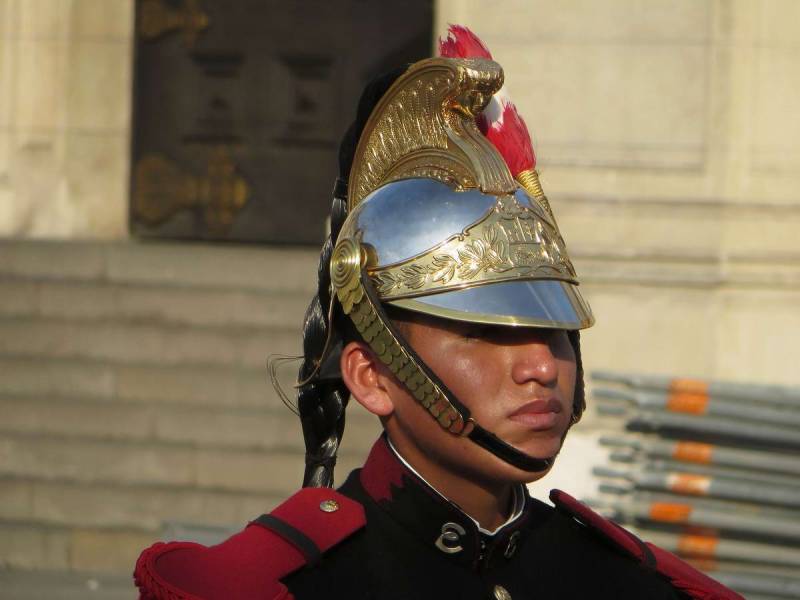
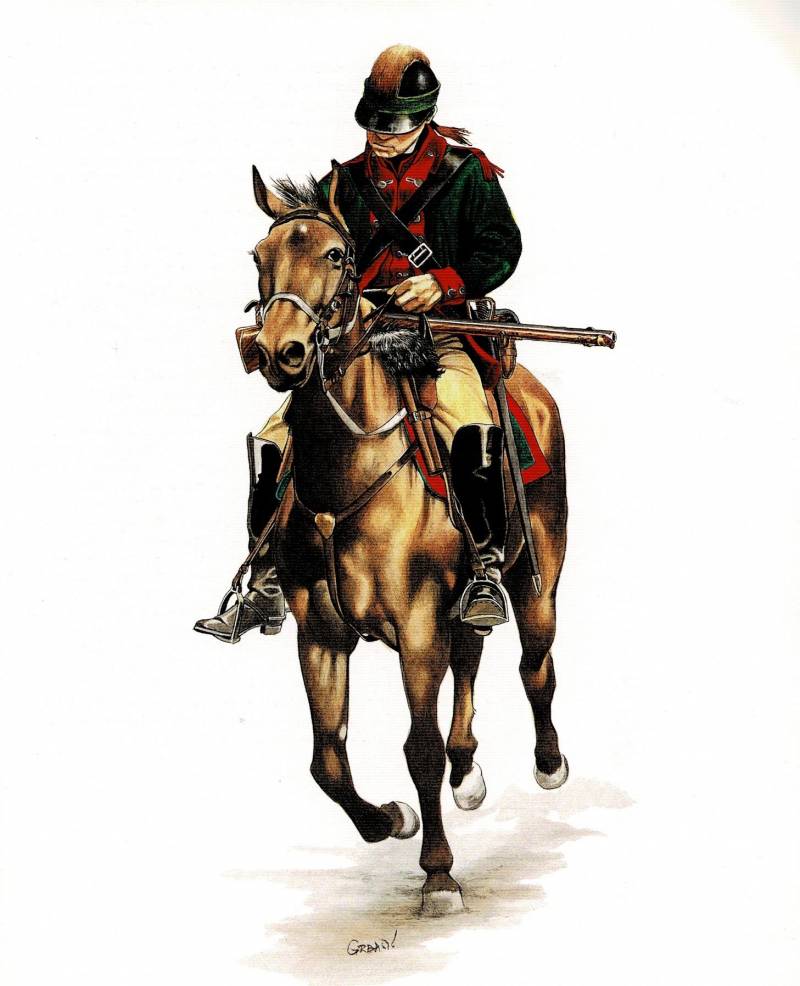
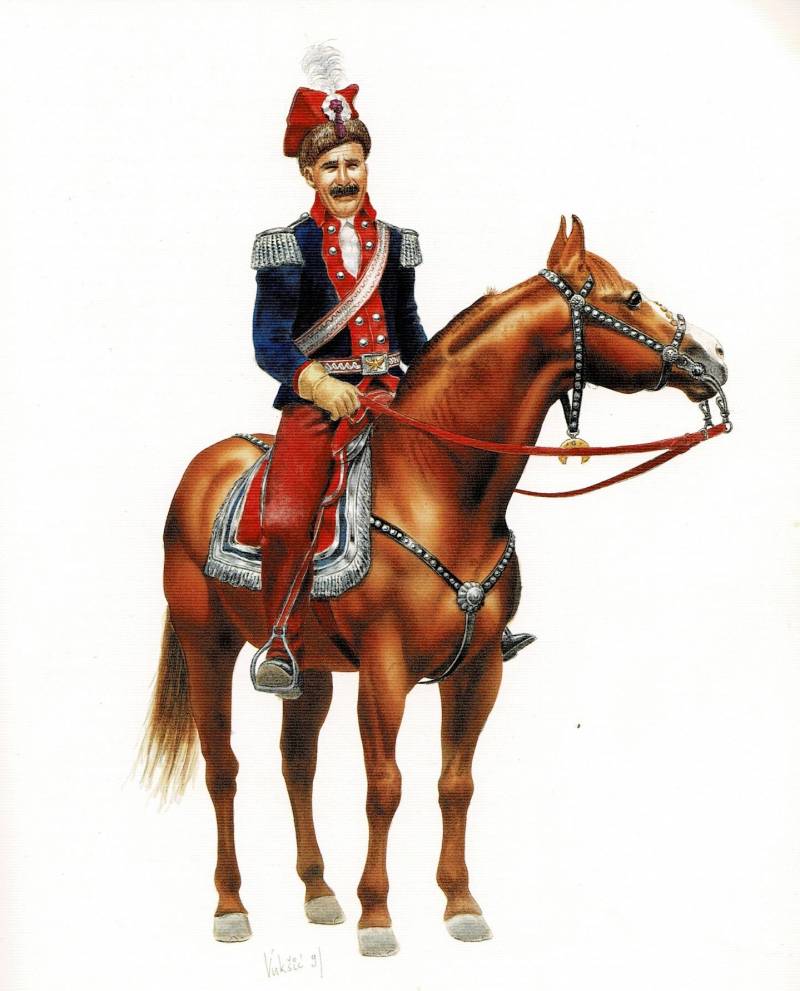
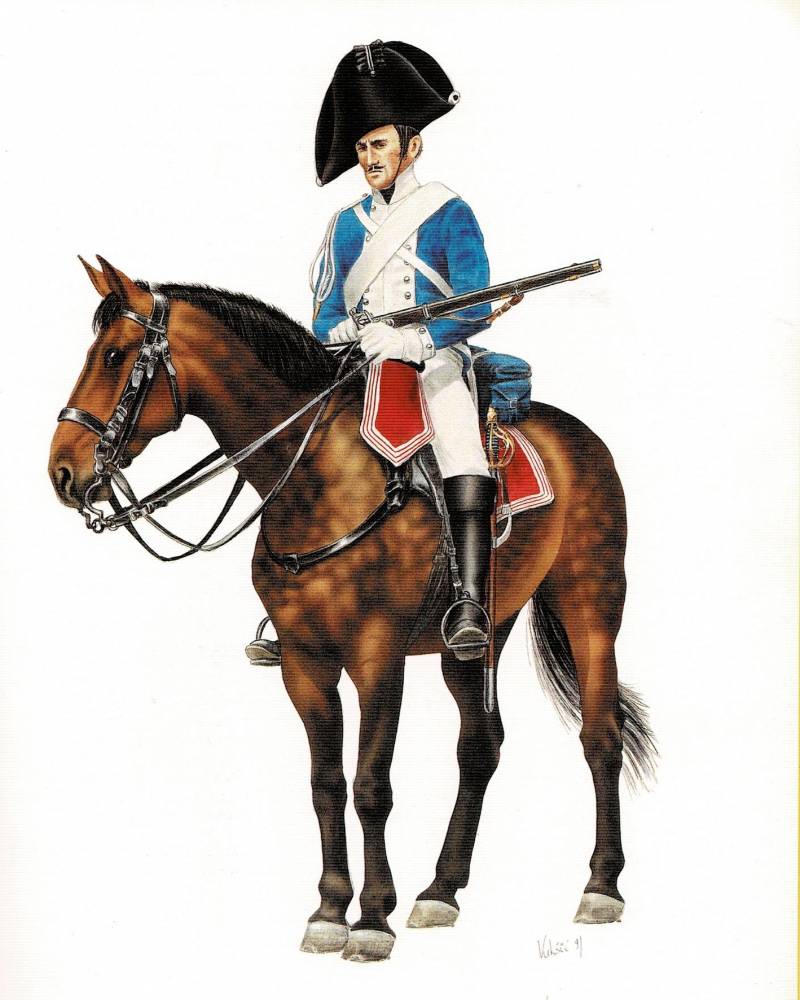
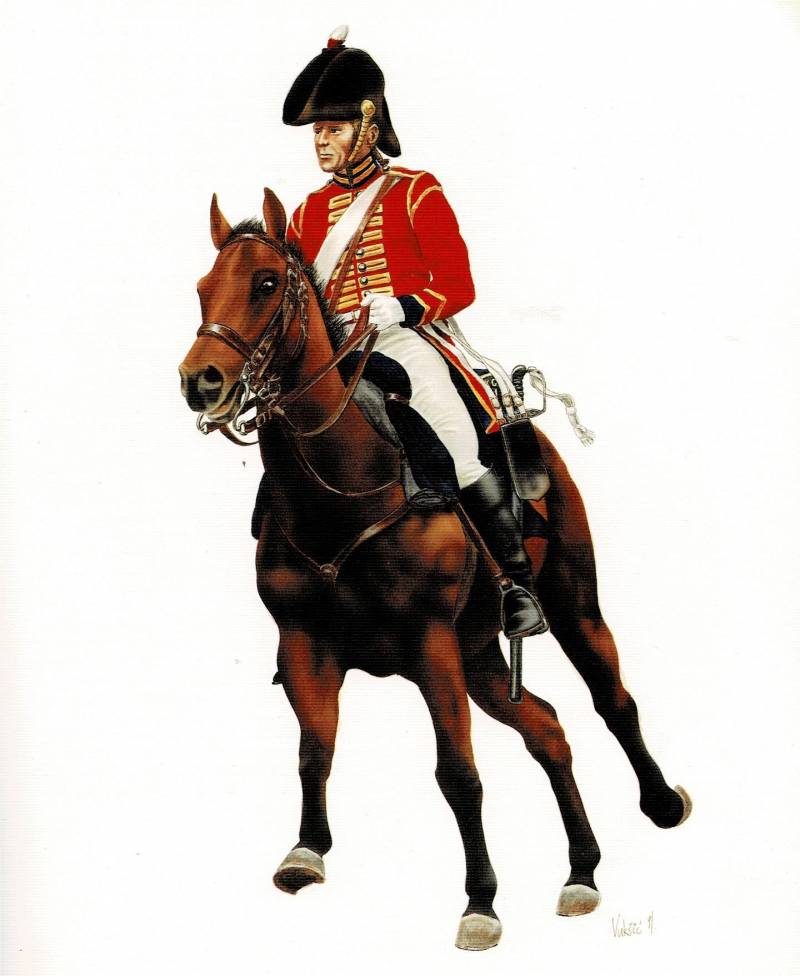
Information